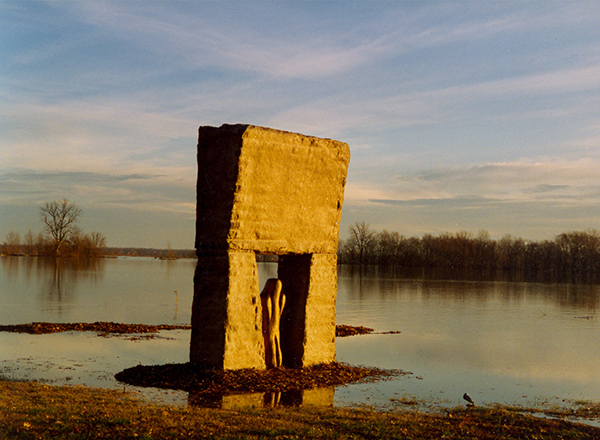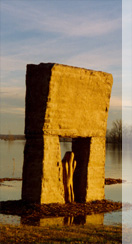Mohandis Gandhi, who earned the name Mahatma (“Great Soul”) attributable to his extraordinary ministry, is the subject of a new biography by Joseph Lelyveld profiled in the March 30, 2011 edition of The New York Times, http://www.nytimes.com/2011/03/30/books/in-great-soul-joseph-lelyveld-re-examines-gandhi.html?_r=1&scp=2&sq=Gandhi&st=cse. What struck me most from the review by Hari Kunzru was Gandhi’s eagerness for “Theosophy — a creed whose blend of Hinduism and Western Spiritualism made it a magnet for holders of unconventional ideas.” During his early days in London, Gandhi reached out beyond his Hindu faith and the constraints of caste to seekers from other walks of life. Here through a friend, he discovered Tolstoy who embraced the universal human condition in the philosophy of nonviolence.
Some have called GladdeningLight’s premise syncretism, a betrayal of one’s faith in the hopes of reconciliation and union from disparate beliefs. Rather, our premise is one of respect for ideas that in turn breeds understanding. Gandhi gives us a beautiful example of aspiration sought from an inquisitive nature. This diminutive eastern man from an obscure Indian village is enthralled by the westerner Tolstoy’s treatise on nonviolence (The Kingdom of God is Within You), hence Martin Luther King who changed our brothers and sisters for all time.
An Allegory of the Sea Creatures by Diane McPhail
Our good friend Diane McPhail — artist, counselor and spiritual director — tells the story of creativity awakening within single-cell creatures of the sea. Eons ago, this primordial matter at the surface of the oceans of the earth thrived on the light and warmth of the sun. As a by-product of photosynthesis, the atmosphere began to take on oxygen, choking life and incinerating cells in sparks of external fire. Then an amazing thing occurred. Rather than be destroyed, mitochondria emerged independently at the sub-cellular level – inherited from ancient source DNA – and began to “learn” to captivate the oxygen, burning it from within. The result was atmospheric balance, a miracle of evolution and our eventual walk from the waters.
As humans, we have inherited this mitochondria that in a way is not ours, but rather God’s ancient cosmic source matter independent of our own personal make-up. It is passed along from mother to child bonded in our own strands of DNA as God’s energy complementing our personalities. When the Holy Spirit awakens our creativity within, the divine spark feeds off these companion strands within us, breathing and feeding upon the mitochondrial captivation to bring our inner souls to light and life.
This is how art is borne from within. When the artist is stirred to creativity by these divine impulses, God is at work. Whether conscious or not, God tenders the fire of our souls with a white hot poker to awaken our senses. The end result often feels not quite “ours,” as if another source was involved in the imaginative process of turning over to our companion creator the manner of our art. It’s magical, yet not magic. We dance with the God of our souls to bring to divine light and life the working miracles of our own creativity.
Artist Diane McPhail will be appearing alongside other artists and theologian Marcus Borg at GladdeningLight’s Lovefest, February 4-6, 2011 in Winter Park, Florida.
Lord, for Thy Tender Mercy’s Sake
Lord, for thy tender mercy’s sake, lay not our sins to our charge,
but forgive that is past,
and give us grace to amend our sinful lives.
To decline from sin and incline to virtue,
that we may walk in a perfect heart before thee, now and evermore.
The opportunity to make sense of a church service came rarely to me as a child. When it did, it was usually in the context of song, in the harmonizing of hymns. These were occasional pearls sprinkled among the standard rota of guilt, judgment and substitutionary atonement. Our Church of Christ in Mississippi was proud of its a cappella singing in between its bible-thumping, and I was momentarily transported when given the chance to float an alto harmony into a beautiful hymn like Fairest Lord Jesus.
I dreamt of the angelic voices from the boys choir in Vienna, far off and unreachable. As an adult, I had little knowledge of the breadth of this marvelous polyphony until hearing the Tallis Scholars for the first time. I nearly drove off the road, I can remember it so clearly, the soaring straight tone of sixteen voices committed to each pitch and rhythmic line, weaving in & out of one another in a blend of multiple melodies. Most of their work is from the English church and Catholic traditions of southern Europe from the sixteenth century — Spain, Italy and Portugal.
Amid the early fits & starts of my spiritual growth, choir played an essential role in squaring me toward the godhead. Tears were shed singing Palestrina, and anthems like Lord, for Thy Tender Mercy’s Sake by Farrant and If Ye Love Me by Tallis. In addition to the music, there were kindred spirits in choir, a sense of community and shared experience. The way polyphony is delivered in a blended sound complements community. Perhaps that’s why I’ve always preferred it to operatic arias or cantoring. The space that emerges from the organic balance of choral singing evokes the Holy Spirit moving within the group.
Give a listen to the Dale Warland Singers, Westminster Cathedral Choir, the Voices of Ascension, the Cambridge Singers, the Huelgas Ensemble, The Sixteen, the Cambridge Singers — especially during the high holy seasons of Lent, Advent & Christmastide. Their unwavering tones amid majestic cavernous spaces will transport you to the altar of God.

 Connect with GladdeningLight on
Connect with GladdeningLight on 

